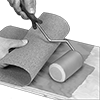Filter by
For Use On
Formulation
Container Type
Color
For Joining
Container Size
Consistency
Maximum Temperature
Appearance
Manufacturer
Reaches Full Strength
Shear Strength
Clarity
Begins to Harden
DFARS Specialty Metals
Export Control Classification Number (ECCN)
For Use With
Solution Type
About Structural Adhesives
More






























































